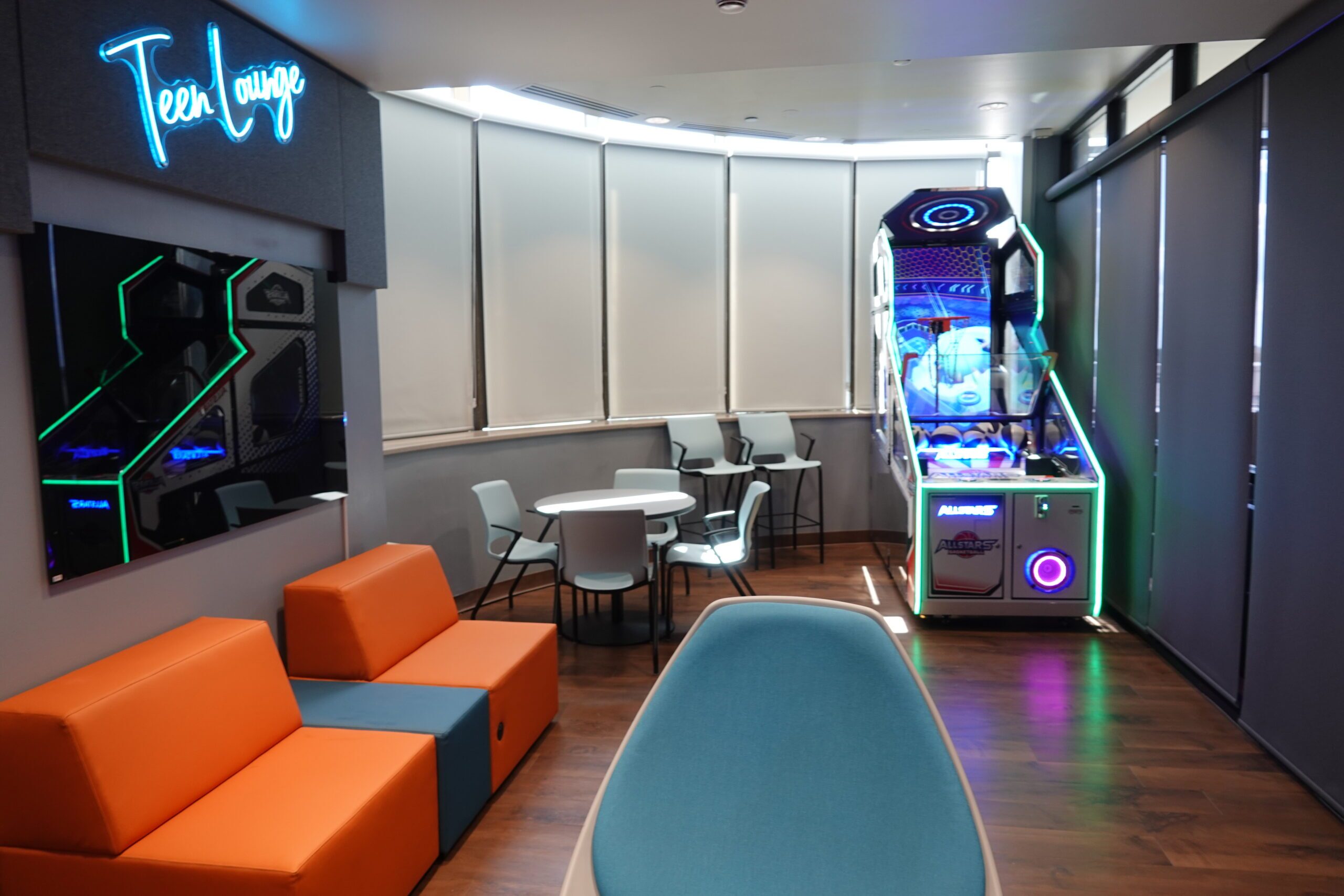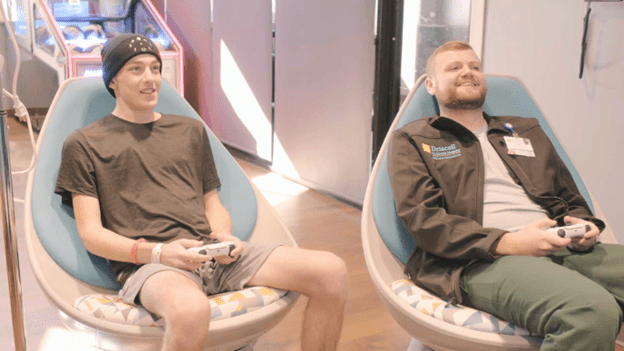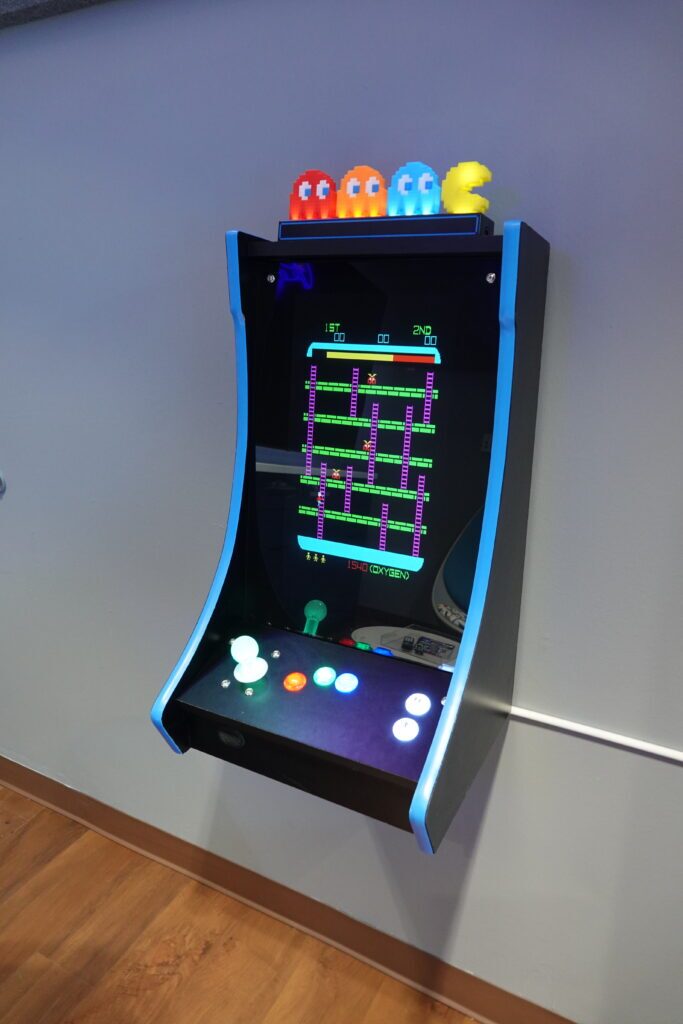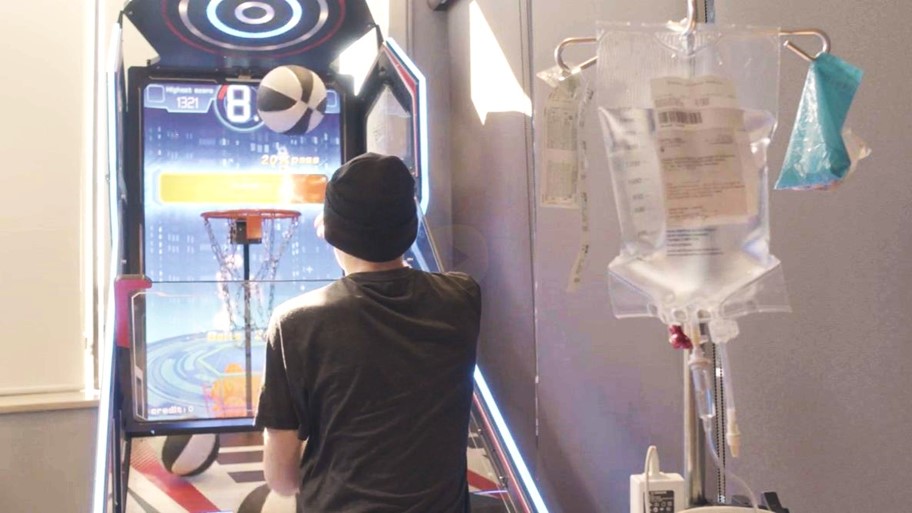
When 15-year-old Logan Parsons was diagnosed with germ cell cancer in August, his world changed in an instant. While his friends were enjoying the last carefree days of summer, this high school sophomore with a love for sports and video games found himself spending nearly a month at Driscoll Children’s Hospital.
Between treatments and physical therapy, he had plenty of time to reflect on the drastic shift in his young life. “Normal things, like opening a jar of jelly, have become harder,” he explained. It’s a task he didn’t think twice about before. “I’ve lost a lot of muscle mass.”
Yet through the uncertainty of his diagnosis and the challenges of treatment, one thing has provided him with a sense of normalcy: the newly redesigned Teen Room on the hospital’s fourth floor.

The Teen Room is part of Driscoll Children’s holistic approach to healing, offering young patients like Parsons a space to unwind, connect and feel like a teenager again.
The newly renovated room is designed specifically for teens ages 11 and up who are receiving treatment at the hospital. But it’s not only a place to play video games or shoot hoops — although it offers both — but a refuge where teenagers can feel more like themselves in the middle of a medical journey.

A safe space for teens
Every room in a hospital has its purpose, and the Teen Room plays a crucially important role for patients, explained Michelle Goodman, senior director of care coordination at Driscoll.
“This room is a safe space for teens and adolescents,” she said. “Being in the hospital is hard, even for adults, but for a teen it can feel like they’re missing out on so much.”
The Teen Room offers more than just activities — it helps patients reclaim a piece of their normal lives, a vital part of coping with the emotional toll of being hospitalized.
The space was designed with care and intention. Becca Smith, a Driscoll child life specialist, was one of the key people behind the redesign. She said she wanted to create a room that felt current and relevant to today’s teens. “I just wanted it to feel comfortable and safe,” Smith explained. “And also, you know, with the times — make it a revamped place.”
The result is a room filled with technology and entertainment options that resonate with teenagers, including an 80-inch TV, Xbox and PlayStation consoles and an arcade basketball machine.
Parsons, who spends time playing video games in the room with his older brother, appreciates the atmosphere.
“It helps cure boredom,” he said. “Being in here is comforting because of the lights and the space.”
But for Parsons, the Teen Room isn’t just about the games — it’s about connection. He described how playing video games with his brother has been one of the most meaningful aspects of his hospital stay.
“Talking helped me a lot mentally, especially with my brother, who I’m really close with,” he shared. “It was more about the conversation and the time than the game itself.”

The role of child life specialists
At Driscoll, the Teen Room is more than a place to hang out — it’s part of the hospital’s broader mission to treat the whole child.
Smith, Goodman and the rest of the Child Life Program team, play a crucial role in helping patients process their hospital experience and maintain emotional well-being. By creating safe and engaging environments, like the Teen Room, they help teenagers cope with their diagnosis and the stress that comes with it.
“Having a space like this helps normalize their hospital stay,” Goodman said. “It gives them a chance to feel like they’re not missing out on life outside the hospital. They can still do normal things, like playing games or watching a movie.”
This sense of normalcy can be especially important for teens who are undergoing intensive treatment, such as chemotherapy or surgeries, which can often leave them feeling disconnected from the outside world.
Marie Soza, Driscoll’s school teacher, has seen firsthand how the space benefits her students.
“I see them take a deep breath and realize that life’s going to be OK,” she said. “They need a place outside the hospital room to laugh and pretend that life is normal.”
For many teens, the room becomes a place to escape the constant medical care and procedures, a spot where they can just be kids again.
A place for hope
For Parsons, the Teen Room has been a bright spot in his cancer journey. After spending nearly a month in the hospital, he’s become all too familiar with the challenges of being a long-term patient. But the Teen Room has given him something to look forward to.
“I enjoy being able to go somewhere to chill and relax,” he said. “It’s been really helpful.”
After all, the Teen Room is more than just a place to play games, it’s a place to find normalcy, connection — and hope.
And for teens like Parsons, whose young lives have been turned upside down in an instant, that’s what matters most.
Learn more about Driscoll Children’s Hospital today and discover how the Child Life Program makes positive connections with patients and their families.

